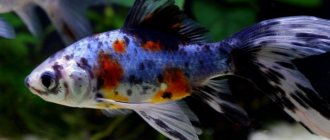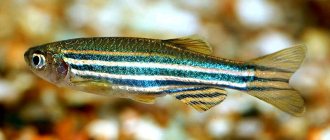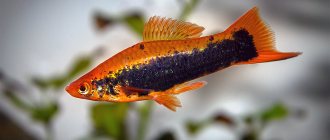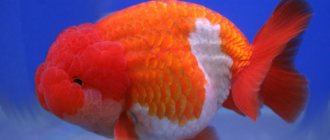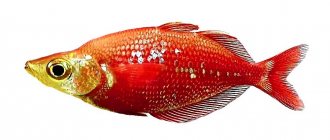It is difficult to decide on future pets among the variety of aquarium fish. If you don't know which one to buy, you need to carefully study the information about each type and weigh the pros and cons. If you are a newbie aquarist, we recommend reading this article. In it you will learn about a wonderful pet. Meet the fish minor.
Content
- 1 Description
- 2 Conditions of detention
- 3 Behavior and neighborhood
- 4 Food
- 5 Reproduction
- 6 Photos of minors
- 7 History of origin 7.1 Main groups of the genus Hyphessobrycon
- 7.2 Description of the genus group Hyphessobrycon
Crescent tetra: an unpretentious fish, therefore quite popular among aquarists.
- Other names: Serpas, Tetra crescent, Hephessobrycon minor, Black phantom (for black form)..
- Origin: tropical rivers and lakes of South America (Brazil, Paraguay, Guiana).
- Size: 4-5 cm.
- Temperature: 22-28 °C °C.
- Water parameters: pH water hardness up to 15 GH, acidity 6-7.2 pH.
- Lighting: diffused.
- Behavior: peaceful, gregarious.
- Additional information: prefer quiet, calm currents.
- Content difficulty: easy.
Habitat in nature
The long-finned serpas minor (Hyphessobrycon eques, and earlier Hyphessobrycon minor) was first described in 1882. It lives in South America, its homeland is Paraguay, Brazil, Guiana.
A fairly common fish, found in stagnant water, with a large number of plants: tributaries, ponds, small lakes.
They stay near the surface of the water, where they feed on insects, their larvae and plant particles. They live in flocks, but often fight with each other and bite their fins.
Description
Tetra minor, veil form
A very beautiful, bright fish that looks like a small flame. The body is elongated, slightly compressed from the sides. The color is bright red. There is a black spot on the head, behind the gills. A distinctive feature of the Minor is its dorsal fin. It has a quadrangular, elongated shape, is located almost vertically in relation to the body and is painted black. They often have a white edging along the edge of the fin. The anal and caudal fins are red. There is an elongated, veil-shaped fin. The eyes are expressive, black. In an aquarium they grow no more than 4-5 cm.
Minor - small flame!
Reviews
Aquarists are captivated by the exterior and cheerful behavior of the minors. They note omnivorousness and unpretentiousness to food, environmental parameters, and low cost in pet stores.
I don’t like the tattered fins of veiltails and the obligatory keeping in a flock. The difficulty of breeding confuses me.
Conditions of detention
Minor is an unpretentious fish, which is why it is quite popular among aquarists. It can be recommended to a novice aquarist. This fish is schooling, so it is recommended to keep 5-6 individuals. Each fish requires at least 10 liters of water. That is, ideally, an aquarium of 60 liters or more is suitable for a school of fish. As a primer, you can use, for example, sand or fine gravel of dark colors to highlight the bright cutting. The aquarium can be decorated with various shelters, such as broken shards, grottoes, driftwood, caves, stones. You can plant any plants in an aquarium; the fish is indifferent to them and will not dig them up or tear them off and eat the leaves. It is recommended to arrange thickets, for example, plant Java moss, elodea, and nubias along the back wall of the aquarium, but be sure to leave enough free space for swimming. Minors prefer the middle and lower layers of water. Since fish prefer diffused, dim light, it is recommended to place floating plants on the surface. Filtration and aeration are mandatory. Water changes must be made at least once a week in a volume of up to 20% of the total volume of the aquarium.
Floating plants on the surface of the water are a must to diffuse bright light!
Behavior and neighborhood
Minor is a peaceful fish if kept in a school and its neighbors are not inferior to them in size and activity. When alone, he can be aggressive. You should choose the same active, playful and fast fish as neighbors, for example, zebrafish, black neons, barbs, ancistrus. Smaller neighbors or those who swim slowly or have veil fins are absolutely not suitable for the minor. He will bite his fins, chase him around the aquarium and eventually kill his neighbor. Therefore, goldfish, angelfish or bettas are strictly prohibited.
The benefits of minor fish for humans
Flocks of minors are not only interesting to watch. Psychologists note that this also has a beneficial effect on a person’s well-being and mood for the whole day. Cheerful fish frolicking in an aquarium introduce you to a harmonious state of meditation, calming your nerves, perfectly lowering high blood pressure, and putting you in a peaceful, friendly and philosophical mood.
Even a beginner in the aquarium business can get himself some minor fish and care for them. Serpas, which do not require enormous care, will become friends who bring joy for quite a long time, if you do not make serious mistakes in caring for them.
Nutrition
Minor is absolutely unpretentious in food. The only thing worth remembering is that this fish is small and so is its mouth, so the food must be given in small fractions or pre-chopped. In food you can use crustaceans, bloodworms, tubifex, fruit flies. Of the dry ones, you should give preference to flakes or granules, but you should not get carried away with them. In order for the diet to be balanced, the fish can and should be periodically fed with plant foods, such as spinach, dandelions, and redwood. Vegetables can be fed with zucchini, cabbage and cucumber, previously blanched. Minor does not feel full, so it is not recommended to overfeed the fish. It will be enough to feed it once a day with a small portion, so that the fish eat it in a few minutes. All excess food must be removed from the aquarium using a siphon to prevent imbalance in the aquarium.
Feeding
Serpas is omnivorous. Prefers live food, but dried and frozen can be given. The diet should be balanced and contain 60-70% animal food and 30-40% plant food.
You need to carefully chop the food before feeding: small fish can choke on a large piece.
Experienced aquarists recommend the following foods:
- live - daphnia, brine shrimp, crustaceans, bloodworms, cyclops, enchytraeus and small insects;
- dry – granules and flakes;
- vegetable - spinach, duckweed, pinnate, chopped lettuce and dandelion.
Like all other fish, the minor should not be overfed. The food should be completely eaten within one to two minutes.
Feeding the Cubs
From the age of five to six days, babies need to be fed zooplankton: ciliates, rotifers, small nematodes, nauplii of cyclops and other aquatic crustaceans. From the age of three months, grown-up minors can already be switched to an “adult” diet.
Reproduction
Breeding a Minor is not difficult. It is enough to create the conditions necessary for spawning. Reproductive age is reached at 9-11 months. It is quite difficult to distinguish males from females and it is impossible to do this at a young age. The differences are clearly visible during spawning or before spawning. Males are brighter than females, while females, in turn, have a more rounded abdomen. For the spawning tank, it is recommended to take a separate aquarium of 10-20 liters. A separate mesh must be placed on the bottom to prevent the parents from eating the eggs. Soil is completely optional, but plants are possible. Small-leaved, long-stemmed varieties are recommended, but Java moss or fern can also be used. Lighting should be dim and diffused. Before spawning, the fish are fed generously. The temperature in the spawning tank is kept in the range of 25-27 degrees and a couple, or preferably 3-4 fish, are released. The female lays 200-300 eggs. After spawning, the parents are placed back in the aquarium. The fry appear after 1-2 days and begin to swim at 4-5 days. The fry need to be fed generously - 5-6 times a day. They grow quite quickly and, unlike adults, do not suffer from obesity or overeating. Cyclops nauplii, daphnia, and rotifers can be used as food.
Breeding
Reproduction of Minor does not require special skills; it is enough to create the necessary conditions in the spawning aquarium. For breeding you will need an equal number of females and males.
The tank is used in small sizes, with minimal lighting. The bottom is lined with plant leaves or moss.
Water must meet the following indicators:
| Rigidity | Acidity | Temperature |
| 6-8°dH | 6.0 pH | +27 °С |
Future parents are fed abundantly with a variety of live foods. When the males reach maximum brightness and the abdomens of the females are noticeably rounded, they can be transplanted into the spawning tank.
It is better to do this in the evening, since the process begins in the morning.
The swept and fertilized eggs fall onto the leaves of the plants. Adult fish are returned to the main aquarium, and the tank with eggs is shaded; light can destroy the clutch. The incubation period lasts two days, then the first fry appear. Initially, they feed on the yolk sac; as soon as the ability to move independently appears, the juveniles begin to be fed. In the first feeding they give ciliates and egg yolk, as they grow older they transfer to artemia nauplii and gradually to adult foods.
Origin story
It is well known that this genus was isolated in 1908 by Durbin.
Some sources give a literal translation of the word "hifessobrikon" as "small brikon" (however, it should be noted that for the Latin language its constituent syllables are rare enough to confirm this). A valid definition of the genus was made by Eigemann (1918, 1921). Today, about 110 species of fish of the genus Hyphessobrycon
, belonging to the subfamily
Tetragonopterinae
, which includes most of the charicinids kept in decorative aquariums.
The genus closest to it is Hemigrammus, Gill 1858
with which they are literally located together on the same taxonomic “fork” [1]. The difference is determined mainly by differences in the structure of the caudal fin. Also, the genus Paracheirodon is very close to it, and the debate about its isolation in scientific circles has not yet subsided, for which there are serious reasons. Over time, in the genus Hifessobricon itself, a division of species into 5 groups was identified (Hoedeman 1954, Gery 1977, G. Shterba), which is quite arbitrary and now no longer covers all species, but still allows us to at least approximately see the overall picture. In turn, these groups can be formed into two main supergroups based on characteristics characterizing body shape and color.
Main groups of the genus Hyphessobrycon
| Generalization of groups | supergroup I | supergroup II | |||
| Existing groups | Bentosi | Callistus | Bifasciatus | Heterorhabdus | Metae |
| Images of iconic species: | [2] | [3] | [4] | ||
| Body Shape: | tall, diamond-shaped; enlarged dorsal muscle | elongated, “torpedo-shaped” | |||
| Body color: | weakly expressed, or with large but barely noticeable blurry spots | with a certain toning from yellowish to intense red; with one dark spot on the anterior half of the body, except for H.georgettae | with two dark comma-shaped spots on the anterior half of the body | with two horizontal lines from head to tail: pearlescent (can be of different colors) and intense black underneath | the same, but the black line downwards, blurring, becomes a spot |
| Kinds: | N. bentosi N. rosaceus N. erythrostigma H. socolofi N. robertsi | H. eques H. georgettae H. haraldschultzi H. minor N. takesi | H.bifasciatus H.flammeus H.griemi H.equadoriensis | N. agulha H. scholzei H. stegemanni H. heterorhabdus H. vilmae H. herbertaxelrodi | N. metae H. peruvianus N. loretoensis |


